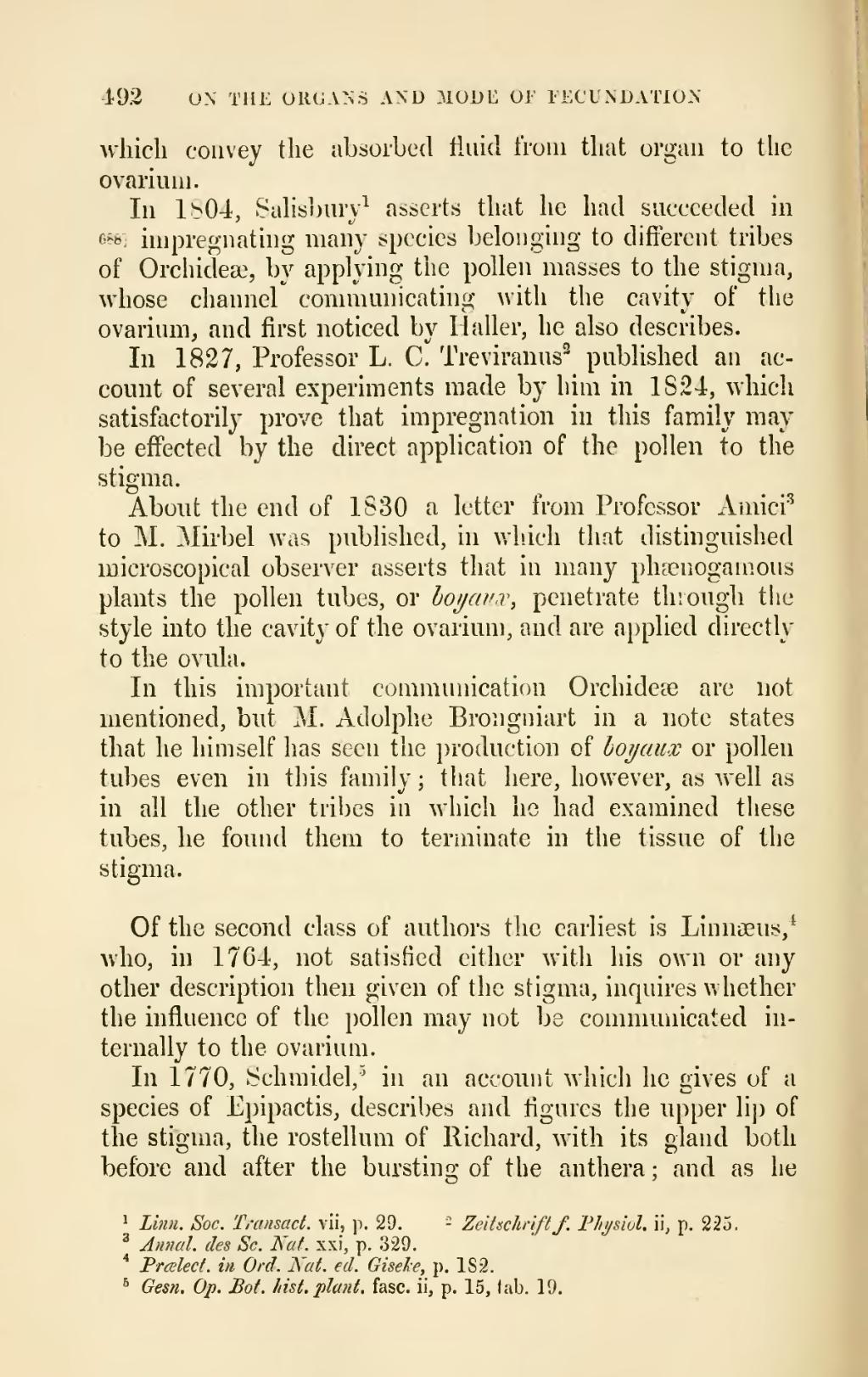which convey the absorbed fluid from that organ to the ovarium.
In 1804, Salisbury[1] asserts that he had succeeded in 658] impregnating many species belonging to different tribes of Orchideæ, by applying the pollen masses to the stigma, whose channel communicating with the cavity of the ovarium, and first noticed by Haller, he also describes.
In 1827, Professor L. C. Treviranus[2] published an account of several experiments made by him in 1824, which satisfactorily prove that impregnation in this family may be effected by the direct application of the pollen to the stigma.
About the end of 1830 a letter from Professor Amici[3] to M. Mirbel was published, in which that distinguished microscopical observer asserts that in many phænogamous plants the pollen tubes, or boyaux, penetrate through the style into the cavity of the ovarium, and are applied directly to the ovula.
In this important conununication Orchideæ are not mentioned, but M. Adolphe Brongniart in a note states that he himself has seen the production of boyaux or pollen tubes even in this family; that here, however, as well as in all the other tribes in which he had examined these tubes, he found them to terminate in the tissue of the stigma.
Of the second class of authors the earliest is Linnæus,[4] who, in 1764, not satisfied either with his own or any other description then given of the stigma, inquires whether the influence of the pollen may not be communicated internally to the ovarium.
In 1770, Schmidel,[5] in an account which he gives of a species of Epipactis, describes and figures the upper lip of the stigma, the rostellum of Richard, with its gland both before and after the bursting of the anthera; and as he

